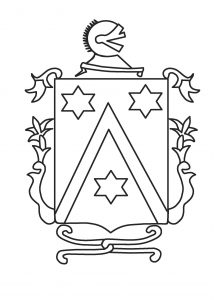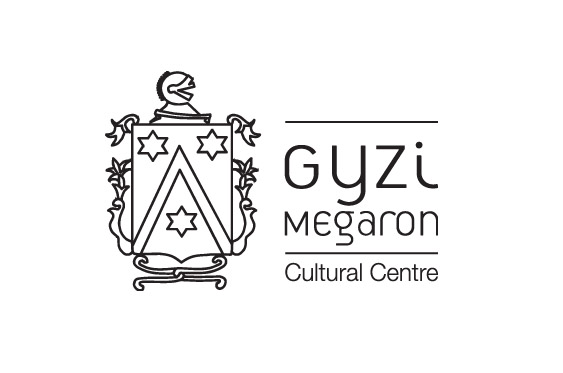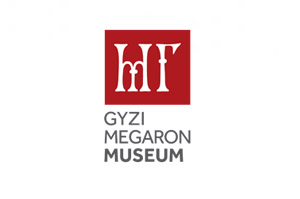THE GYZI FAMILY
THE GYZI FAMILY THE CONCERT HALL EDITIONS PHOTO GALLERY
The Gyzi family (Ghisi) came to Greece from Venice during the 4th Crusade.
Head of the Greek branch was Marcos Gyzis who came to Greece following an invitation by the Noble Marcos Sanoudos, Lord (and owner) of the Cyclades (The Duchy of Naxos). It is the era of Venetian dominance at which time almost all the Aegean islands were under Venetian rule.
The Gyzi family found themselves on Santorini at the beginning of the 17th century, and it was the year 1642 when they settled in the then capital of the island named the Castle of Skaros.
One of Gyzi’s branch was embraced by the orthodox doctrine and founded, on December the 6th in 1651, the Monastery of St. Nicholas of Gyzi. Today it is a convent bearing the same name which was relocated in 1816 to the village of Imerovigli. In 1699 Zacharias Gyzis was elected as the (orthodox) Archbishop of Thira, who then relocated his base to Pyrgos from Scaros castle since at the time the latter was the base of the Latin Archbishop of Thira.
The catholic branch of the Gyzi family was represented and distinguished by Michelis Gyzis who was born in Skaros in 1802. He became active in the export of wine to as far away as the tsarist Russia. He acquired a great amount of real estate and for all his life made huge donations to the Catholic Church and especially to monasteries. Before his death in 1888,and inconsolable after the loss of his one and only son Christodoulos Gyzis (who died in 1857 in Paris), he bequeathed his Megaron (mansion) to Fira, to the adjacent monastery of the Sisters of Mercy. He was buried, as he himself had requested, inside the Holy Temple of the Monastery of the Brothers of Lazarists, dedicated to the Conception of the Virgin Mary. The second child of Michelis Gyzis was a girl, named Margarita, who herself gave birth to a daughter, named Maria, after her marriage to Jacob Vazeggio. Maria married the Consul of France, Petro Delenda in Santorini but bore no children, hereby closing the presence of the family who had been rumoured in Santorini for more than two centuries.
The coat of arms of the Gyzi family can be seen built into the facade of today’s Gyzi Megaron in Fira, and at the Monastery of St. Nicholas in Imerovigli.

The Gyzi Megaron (palazzo Ghizi) is one of the many mansions of the catholic nobles which were built in Fira from the year of 1811 and onwards. In this era the Castle of Skaros (the base of the nobles) had become derelict due to damage done by earthquakes and volcanic explosions, something which made it extremely dangerous for the residents to stay there and forced them to move to safer areas. The period of piracy and predatory raids had elapsed so they were able to build settlements apart from the already existing castles.
These mansion houses were built in Fira, above or next to the many Kanaves (wineries) which belonged to those families and were maintained for practical reasons in that particular settling.
After the death of Michelis Gyzis in 1888 his mansion was handed over as aforementioned to the monastery of the Sisters of Mercy which was right opposite and next to the Catholic Cathedral of the Temple of John the Baptist (Domo). In 1925 the sisters founded there a knitting school with 17 electric knitting machines, for the girls of the island to work and not have to move to the large urban centres to find employment. Years later the sisters rented the school to enable them to perform acts of charity. In the 1950s specifically, it accommodated the Public Treasury of Thira.
In the great earthquake July 9th in 1956 the first floor of the mansion, which was the main floor, was completely destroyed and therefore was demolished. Today the Gyzi Megaron is all that remained after the catastrophic earthquake, that is the Kanava (winery) and the surrounding rooms of the ground floor. This building creates an internal terrace which is partly covered with a cruciform groin vault and partly open-air, lending an architectural particularity which dates to the 18th century and constitutes one of the few remaining examples. From the detached mansion which was right above the only remains, is a small iron gate, which reminds of its entrance.
After the earthquake the Sisters of Mercy left the island having been present there for 116 years. Their convent and the Gyzi Megaron were bequeathed to the Catholic Diocese of Thira.
In 1980 the former catholic Bishop of Thira, p. Francesco Papamanolis, together with the unforgettable vicar Don Nicholaos Kokkalakis had the initiative to restore and maintain the Kanava and the remaining rooms of the ground floor, to accommodate there the activities of the Gyzi Megaron Cultural Centre wishing in this way to continue its cultural offer to the Catholic church in Santorini, an offer and tradition lasting many centuries. The Kanava was transformed into a place for cultural activities, but the surrounding rooms of the ground floor accommodated the Gyzi Megaron museum.
The renovation was done in a way, on the one hand to maintain the space intact and to display all of the details of the unique style of local architecture (for example the bows of dark stoned limestone, the cruciform groin vault etc.), and on the other to serve the operation and the needs of the Cultural Centre.
THE GYZI FAMILY THE CONCERT HALL EDITIONS PHOTO GALLERY



